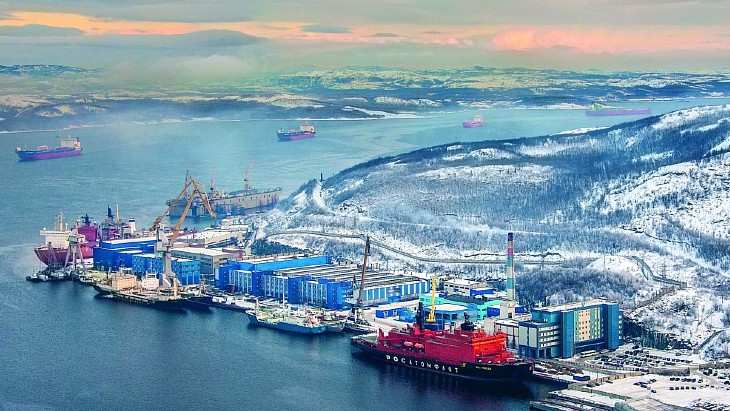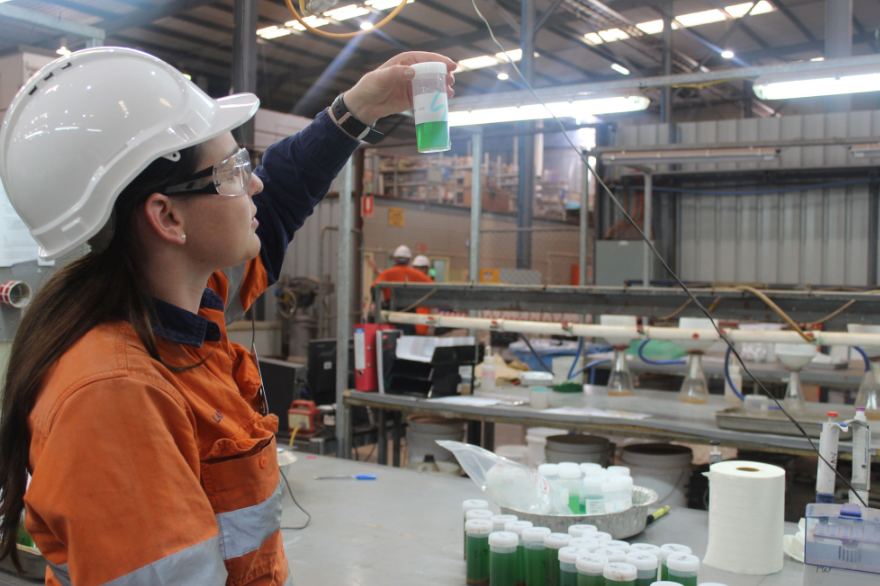Costs of new nuclear need addressing, says Wood Mackenzie
18 May 2023
With nuclear generating capacity set to increase by 280 GWe by 2050, the biggest economic hurdle to the uptake of the latest large reactors and small modular reactors (SMRs) is cost, according to independent energy research consultancy Wood Mackenzie.
.jpg?ext=.jpg) (Image: Wood Mackenzie)
(Image: Wood Mackenzie)"Wood Mackenzie believes nuclear should play a central role in decarbonisation for many countries," the company said. "Under our base case, nuclear capacity expands 280 GW by 2050. Under our Global Pledges Scenario, consistent with a 2°C warming pathway, a tripling of nuclear capacity is required."
However, in its new report - titled The nuclear option: Making new nuclear power viable in the energy transition - Wood Mackenzie says that high costs are "arguably the biggest impediment to a nuclear renaissance".
According to its estimates, conventional nuclear power currently has a levelised cost of electricity (LCOE) "at least four times that of wind and solar".
"Investors and policymakers need to think holistically in evaluating and comparing nuclear costs with those of other technologies," the report says. "LCOE is just one metric for quantifying the competitiveness of generation technologies. Typically, LCOE does not take into account additional grid costs and these can often increase the relative cost of wind and solar compared with baseload energy sources, including nuclear.
"Even so, the nuclear industry will have to address the cost challenge with urgency if it is to participate in the huge growth opportunity that low-carbon power presents. At current levels, the cost gap is just too great for nuclear to grow rapidly".
.jpg) (Image: Wood Mackenzie Energy Transition Service)
(Image: Wood Mackenzie Energy Transition Service)
Wood Mackenzie says SMRs will play a small part in the power market through to 2030, "largely because high costs are holding back deployment, the decade is already passing by, and construction timelines mean at best only a few plants will be built". It notes industry estimates of first of a kind (FOAK) SMR costs of USD6000-8000 per kilowatt. "Wood Mackenzie analysts expect that FOAK costs will be at the high end of this range, and could be even higher, as developers build out early-stage projects," according to the report.
There are only six potential FOAK SMR projects in the pipeline between 2023-2030, ranging in size from 80 MW to about 450 MW, it notes. The amount of FOAK SMR investment remains uncertain and will be influenced by multiple factors, such as financing terms, commodity costs, uranium availability and the political will to see projects succeed.
According to Wood Mackenzie, at least 10-15 projects - between 3000 and 4500 MW of capacity for a standard 300 MW SMR - need to be under development between 2030 and 2040 to support lower SMR costs.
The report says there are four key aspects of expanding nuclear that need greater focus: policymakers need to set out clear rules for planning, permitting, regulation and safety; expanding uranium supply and processing would help promote long-term price stability and availability; developers need to establish and refine their skillset; and offtake agreements will need to be more creative than ever.
"Governments, developers and investors must work collaboratively to establish a new ecosystem for nuclear to flourish," the report says. "Expanding public support for nuclear will be critical to expanding investment; voters will need to embrace the value proposition of nuclear for it to have a social licence to operate. This is not as unrealistic as it sounds: today's nuclear industry grew out of the energy security concerns and high commodity prices of the 1970s - similar market dynamics to those we face today."
David Brown, Director, Energy Transition Service at Wood Mackenzie, and lead author of the report, said: "The nuclear industry will have to address the cost challenge with urgency if it is to participate in the huge growth opportunity that low-carbon power presents. At current levels, the cost gap is just too great for nuclear to grow rapidly."
Private sector investment essential for SMR deployment, Indian think-tank says
18 May 2023
Successful deployment of small modular reactor (SMR) technology must leverage private sector investment, a new report by the Indian government's NITI Aayog public policy think-tank has found.
.jpg?ext=.jpg) The report was launched at a G20 event in Mumbai (Image: NITI Aayog)
The report was launched at a G20 event in Mumbai (Image: NITI Aayog)The National Institution for Transforming India (NITI Aayog) co-authored the document, A Report on the role of small modular reactors in the energy transition, with India's Department of Atomic Energy (DAE) and integrated engineering consultant Tata Consulting Engineers Limited (TCE). The report was released at the International Seminar on the Role of Small Modular Reactors in the Energy Transition, part of the 3rd Energy Transitions Working Group held in Mumbai from 16-17 May under India's G20 presidency.
"As the world transitions towards sustainable energy, harnessing potential of nuclear power through Small Modular Reactors (SMRs) can pave the way for a cleaner and brighter future. By prioritising research and development in this sector, the global community can help address vital issues such as climate change and energy security. SMRs offer a flexible solution for meeting energy needs," India's G20 Sherpa Amitabh Kant said in a message published in the report. "Release of this report during India's G20 presidency can enable fruitful dialogue on SMRs and contribute towards global efforts to build a sustainable and resilient energy system for all with greater participation of private players."
The 106-page report looks at the role of SMRs in the energy transition, the status of technology development, readiness of supply chains, initiatives to harmonise SMR regulation and the international licensing process, and preparation for international safeguards, as well as the need to de-risk SMR projects to attract investment from private players.
The SMR industry is currently at an "evolution stage" as it faces the challenges of technology demonstration, special material availability, special manufacturing techniques, project funding requirements and regulatory harmonisation, the report says, but these challenges - and the need for SMRs to help reach net-zero goals - mean it is "essential" to establish an "SMR ecosystem".
Standardisation of designs, components and modules will facilitate large-scale adoption of SMRs, and existing safety assessment methodology can be updated for the concept of multi-module designs and emergency planning zones of SMRs, it finds, but financing "remains one of the critical challenges against accelerated development and deployment of SMRs". A high degree of uncertainty in SMR costs - which is to be expected in first-of-a-kind plants, which are also likely to see only partial benefits from modularisation and standardisation compared with later plants - means there is limited private investment in the sector.
Attracting private sector financing for SMRs will be hard without initial support from government, the report notes, but low-cost finance, green finance and incorporation of nuclear into green taxonomies can improve the economics of SMR projects. De-risking SMR projects and establishing attractive financing frameworks is "pivotal" for incentivising private investors, it says. "It has been observed that venture capital is a poor fit for the 'hard' SMR sector. Hence, the public and private sectors must work together to identify alternative sources of early-stage finance."
India's 22 operable nuclear power plants currently generate only about 3% of the country's electricity needs, but the country has confirmed plans for 21 new reactors (including 8 under construction and one - Kakrapar 3 - which has been grid-connected but is not yet in commercial operation).
NITI Aayog has previously said the government should consider SMRs in addition to these plants to help the country reach its energy needs and net-zero goals, and in 2022 Minister of State Jitendra Singh called for the country's private sector companies and start-ups to take part in the development of SMR technology at a workshop held by the think-tank. However, India's 1962 Atomic Energy Act prohibits private control of nuclear power generation and although the act was amended in 2016 to allow Nuclear Power Corporation of India Ltd to form joint venture companies with other Indian public sector units, this does not extend to private sector companies, nor does it allow direct foreign investment in nuclear power, apart from the supply chain.
Researched and written by World Nuclear News
 China and India are said to be interested in the northern route's options (Image: Rosatomflot)
China and India are said to be interested in the northern route's options (Image: Rosatomflot)
.jpg?ext=.jpg) (Image: FIA)
(Image: FIA).jpg?ext=.jpg) The European Commission building in Brussels (Image: Dimitris Vetsikas/Pixabay)
The European Commission building in Brussels (Image: Dimitris Vetsikas/Pixabay).jpg?ext=.jpg) The Passive Heat Removal Facility (Image: Ansaldo Nucleare)
The Passive Heat Removal Facility (Image: Ansaldo Nucleare).jpg?ext=.jpg) The Surry units began commercial operation in the early 1970s (Image: Dominion)
The Surry units began commercial operation in the early 1970s (Image: Dominion).jpg?ext=.jpg) The signing of the Statement of Intent (Image: NWMO)
The signing of the Statement of Intent (Image: NWMO)

